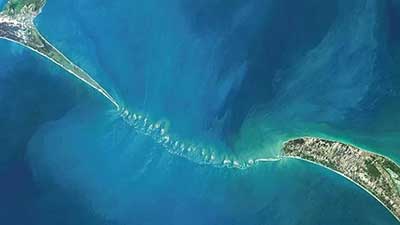Date: 23/11/2022
Relevance: GS-1: Indian Culture - Salient aspects of Art Forms, Literature and Architecture from ancient to modern times.
Relevance: GS-3: Environment Protection and Conservation; Environment Impact Assessment; Infrastructural Development.
Key Phrases: Geo Heritage Value, Ram Setu, National Heritage Status, Sethusamudram Ship Channel Project (SSCP), Gulf of Mannar, Palk Strait, Adam’s Bridge, Navigation Time, Feasibility, Cyclonic Storms, Ecological Disaster, Environmental Cost, Religious Significance, Space-based Investigations, Low-elevation Islands, Great Barrier Reef, Pamban Island, Mannar Island, Global Glaciation Period, Marine Biosphere Reserve, Scientific Perspective.
Context:
- Recently, the Supreme Court gave the Centre four weeks’ time to file a response clarifying its stand on a plea by former Rajya Sabha MP Subramanian Swamy seeking national heritage status for the ‘Ram Setu’.
Key Highlights:
- In 2020, the Supreme Court of India decided to delay the project until an Environmental impact analysis on the feasibility of a route through Dhanuskodi instead of Rama's Bridge had been carried out.
What is Ram Setu?
- Adam's Bridge also known as Rama's Bridge or Rama Setu is a chain of limestone shoals, between Pamban Island, also known as Rameswaram Island, off the southeastern coast of Tamil Nadu, India, and Mannar Island, off the northwestern coast of Sri Lanka.
- The bridge is 30 km long and separates the Gulf of Mannar
(southwest) from the Palk Strait (northeast).
- Some of the sandbanks are dry and the sea in the area is very shallow, being only 1 m to 10 m deep in places, which hinders navigation.
- In Hindu mythology, It is believed that this structure was built by Lord Rama and his army of apes and monkeys to reach Ravana's Lanka.
Sethusamudram Shipping Canal Project
- About
- The Sethusamudram Shipping Canal Project involves creating a 83-km-long deepwater channel that will link Mannar with Palk Strait by extensive dredging and removal of the limestone shoals that constitute the Ram Sethu.
- It received approval of the Indian government in 2005.

- Benefits
- Successful completion of the project would cut travelling by
about 350 nautical miles and will save 10 to 30 hours` sailing
time.
- It is expected to considerably reduce the navigation time between the east and west coasts of India.
- The project will lead to considerable savings and earnings of foreign exchange.
- It will bring down shipping costs.
- With China’s influence in Sri Lanka increasing, India needs to explore alternative shipping routes.
- Successful completion of the project would cut travelling by
about 350 nautical miles and will save 10 to 30 hours` sailing
time.
- Concerns
- The proposed route through the shoals of Ram Setu is opposed
by some groups on religious, environmental and ecological grounds.
- Religious groups have been opposing it as they believe that the structure, which is mentioned in the Ramayana, is of religious significance.
- Concerns have been raised on the stability of the proposed channel and its environmental impact.
- The project would disturb the ecological balance and
destroy corals and kill marine life.
- The area is an important fishing ground for Tamil Nadu and the Gulf of Mannar Marine National Park is in the vicinity of the proposed project.
- The area is also vulnerable to cyclonic storms.
- Emissions from ships traversing the narrow channel will pollute the air and water.
- The proposed route through the shoals of Ram Setu is opposed
by some groups on religious, environmental and ecological grounds.
Geo Heritage Value of Ram Setu:
- The geoheritage paradigm is used in nature conservation to preserve the natural diversity of significant geological features.
- It accepts the fact that geodiversity, consisting of varied landforms and features representative of dynamical natural processes, is under threat from human activities and needs protection.
- The natural heritage of a country includes its geological heritage.
- The value of abiotic factors like geology, soils and landforms is also recognised for their roles in supporting habitats for biodiversity.
Way Forward:
- This is a breeding ground for fish, lobsters, shrimps and crabs
and mostly fish varieties are commercially important.
- So environmental concerns should be addressed accordingly with a sensitive approach.
- This area is already threatened by discharge from thermal plants, brine run-off from salt pans, and illegal mining of corals so there is a need for proper maintenance and protection of the Ram Setu.
Conclusion:
- The Ram Setu carries the unique geological imprints of an eventful past. Therefore, it needs to be preserved not just as a national heritage monument, but also as a geoheritage structure as defined from a scientific perspective.
Source: The Hindu
Mains Question:
What is the Geo Heritage perspective for Ram Setu and how the national heritage site status can be beneficial for the Ram Setu? Also suggest measures to address the issues. (250 Words).







